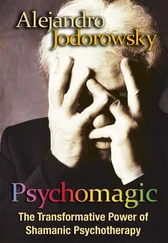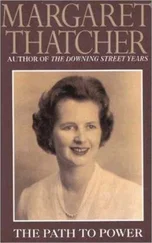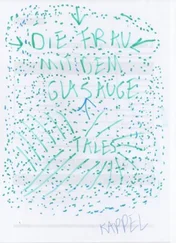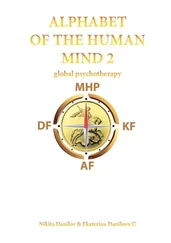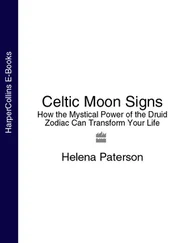Jodorowsky, Alejandro - Psychomagic - The Transformative Power of Shamanic Psychotherapy
Здесь есть возможность читать онлайн «Jodorowsky, Alejandro - Psychomagic - The Transformative Power of Shamanic Psychotherapy» весь текст электронной книги совершенно бесплатно (целиком полную версию без сокращений). В некоторых случаях можно слушать аудио, скачать через торрент в формате fb2 и присутствует краткое содержание. Год выпуска: 2010, Издательство: Inner Traditions Bear & Company, Жанр: Старинная литература, на английском языке. Описание произведения, (предисловие) а так же отзывы посетителей доступны на портале библиотеки ЛибКат.
- Название:Psychomagic: The Transformative Power of Shamanic Psychotherapy
- Автор:
- Издательство:Inner Traditions Bear & Company
- Жанр:
- Год:2010
- ISBN:нет данных
- Рейтинг книги:4 / 5. Голосов: 1
-
Избранное:Добавить в избранное
- Отзывы:
-
Ваша оценка:
- 80
- 1
- 2
- 3
- 4
- 5
Psychomagic: The Transformative Power of Shamanic Psychotherapy: краткое содержание, описание и аннотация
Предлагаем к чтению аннотацию, описание, краткое содержание или предисловие (зависит от того, что написал сам автор книги «Psychomagic: The Transformative Power of Shamanic Psychotherapy»). Если вы не нашли необходимую информацию о книге — напишите в комментариях, мы постараемся отыскать её.
Psychomagic: The Transformative Power of Shamanic Psychotherapy — читать онлайн бесплатно полную книгу (весь текст) целиком
Ниже представлен текст книги, разбитый по страницам. Система сохранения места последней прочитанной страницы, позволяет с удобством читать онлайн бесплатно книгу «Psychomagic: The Transformative Power of Shamanic Psychotherapy», без необходимости каждый раз заново искать на чём Вы остановились. Поставьте закладку, и сможете в любой момент перейти на страницу, на которой закончили чтение.
Интервал:
Закладка:
I came to see you at the Mystical Cabaret October 30, 1992, and asked you a question. For eighteen months, I had felt an intense pain in the back of my neck. Can this pain be the effect of a decline in the spiritual point of view? I have consulted doctors, acupuncturists, masseuses, osteopaths, bonesetters, and healers looking for a cure, and of course, I took anti-inflammatory medicine, cortisone, underwent injections, and so forth. Nothing worked. The evening of Wednesday, October 30, you prescribed a psychomagic act: I had to sit on my husband’s knees while he sang a kind of lullaby behind the nape of my neck. Although you did not know it, my husband is an opera singer. He sang a Schubert tune! And there, I was healed. How much thanks I would like to be able to give!
So what happened?
It’s simple: I made an equation with the nape, the past, and the unconscious. I had the intuition that the relationship with Sonia and her husband had not bloomed normally. Putting her on his knees, the husband was going to symbolically play the role of the father while she symbolically became a little girl again. In addition, because he sang a lullaby to her at the level of this painful point, she would fulfill a never truly satisfied childhood desire: to know her father comes to put her to bed and communicates with her on an emotional level.
Abandoned by my father, my mother destroyed all of his photos and discarded all of the souvenirs of my progenitor, who had died when I was three years old. So I had no mementos. I experienced a deep anger at the idea that I would never know his face. I attended one of your conferences, which dealt with the genealogy tree. I asked you what I could do when I had not met my father and did not possess any photograph of him. You noted that while my father had not acknowledged me, I did know where he was buried—my mother had told me—so I should go to the gravesite and identify myself as his son by sliding a photo of myself into the grave. That is what I did, after some hesitation. Little by little, my anger disappeared. I accepted the idea of never knowing his traits. After fifteen days, my mother, who thought she had destroyed all memory of this man, found a big photograph and gave it to me. This “meeting” with my father was and still is a great happiness. For the first time in my life, I am aware of my identity. Now I feel reconciled and full of love toward my two fathers, as I do toward my mother. Your advice was providential. I thank you from the bottom of my heart.
This example is a good illustration of one of my convictions: to know that reality functions like a dream. At the very moment when Patrick put a photo of himself in his father’s tomb, his unconscious aroused reality to the symbol and united with the father figure. So this can crop up in the dream that is life. Not having been able to prevent this union, that is to say, the appearance of the truth that the mother perpetrated, she finds the photo and gives her son the image that will make him feel complete. You see, for me, all the events are intimately bound to each other. An act well carried-out reverberates on the ensemble of reality.
So the mother collaborated with the act unconsciously.
That is why it is important that the people implicated in the act be informed of its objective so they can participate, with fervor, toward its realization. I will give you an example of a conscious and successful collaboration. I advised Gerard, a man who suffered from feeling a perpetual emotional demand regarding his wife, to buy two big church candles and a ball of red wool to carry out the act with his mother. Here is his letter:
Easter Monday, after having lunch together, my mother and I went to Notre Dame to look for two church candles. There were a lot of people. Then I invited her to have dinner at a Chinese restaurant. We talked a lot, about God, about life, our family. Then we came back. A bit before midnight, we went to her room—she has her room, and my father has his. We positioned the lit candles on the mantel.
They were oriented north to south. I had them to my back, one to my left and one to my right. Then we tied ourselves firmly together with the red wool. We were tied together completely: feet, legs, pelvis, body, arms, hands, head . . . We ended up in an embrace, our arms around each other, and when one moved, the other had to follow. At this moment, I revived the events lived in my early childhood, then my adolescence, with my mother. I had believed in those days that I always had to follow her instructions, to see things as she saw them, to do as she did, to think as she did . . . I then felt a heat in the level of my stomach, then this feeling disappeared. We stayed attached until midnight. We were both very calm. At midnight, I began to cut the wool. First, on the bottom, the feet, the childhood . . . We each cut half of the knots, the lines, but she had me cut a few more than she did. When we could separate ourselves, I thought, “Now, from this instant, I am free.” I told her thank you, and I hugged her. We then talked again for a long time, but she was tired. So I blew out the candles, took one, and returned home. The last part of my act consisted of making her a gift, which I should first dream. One day, something imposed itself on me: the only gift worthy of compensating for the gap provoked by the act was to thank her for what she gave me. Saturday, May 9, at midnight, I wrote with my blood, “I thank you for everything you have given me. I love you. God bless you.” Then I sealed this letter with wax from the Notre Dame candle, which I had lit while writing. This act transformed my life. I ceased hanging over my wife like I had in the past due to an emotional demand coming from my childhood.
I would like to now show you another letter relating to a problem of identification to the mother. The author is a painter, the victim of strong asthma attacks. Here, I used the oneiric element handled by the artist—his own painting. In addition, this letter is interesting because it presents the case of a person who has already had recourse to Psychomagic and apparently found himself healed, until a relapse, which sparked the need for another act. An act can sometimes make a difficulty disappear without exactly eradicating it in its depth. It is appropriate then to prescribe a new act:
. . . I asked you why, following a visit to a pestiferous ossuary in Naples, I had a strong asthma attack, after a year without any relapse. I also asked you why, since the day of my art opening of the exhibition of the “angels” (the opening, by coincidence, being June 8, the eve of the twentieth anniversary of my mother’s death), I had started to have asthma attacks again, and again required daily medication, which I thought I’d never need again. In fact, I believed myself definitively healed after having, under your advice, buried all my medicines under my mother’s tomb exactly one year earlier. Actually, I had not had one attack until this day in Naples . . . You told me that, maybe, I do not allow myself success in the profession I love because my mother had died after a long sickness without having been able to blossom. You advised me to paint a skeleton and to draw over it an angel so the opaque dress would completely hide the bones. You proposed, in a way, to raise my mourning by giving my mother the status of angel. This idea meant a lot to me. I followed your advice and, in spite of my current inability to paint ,I forced myself to go to my studio to make the drawing. I painted the skeleton, but as I did not like it, I made another one over it. Then I made the white angel. Some days later, I had a strong asthma attack with bronchitis, which took a while to get over. I was in despair and so tired that I was forced to go to the mountains for a rest. The biggest confusion prevailed in me, as did a great doubt about everyone and everything. Why did Psychomagic fail this time, to the point of provoking a reverse result to what I wanted? A mystery . . . I was very disconcerted until I thought about it, and it occurred to me that in drawing the angel, I had made two skeletons—two skeletons for one angel! I understood that unconsciously I still had a strong attraction to mourning, this mourning that even made me sick. Upon my return, I remade the Psychomagic. This time, I drew a skeleton, then an angel. The next day, I decreased to half the dose of the medicine. The day after, I actually ceased taking anything. I was cured! Thank you!
Читать дальшеИнтервал:
Закладка:
Похожие книги на «Psychomagic: The Transformative Power of Shamanic Psychotherapy»
Представляем Вашему вниманию похожие книги на «Psychomagic: The Transformative Power of Shamanic Psychotherapy» списком для выбора. Мы отобрали схожую по названию и смыслу литературу в надежде предоставить читателям больше вариантов отыскать новые, интересные, ещё непрочитанные произведения.
Обсуждение, отзывы о книге «Psychomagic: The Transformative Power of Shamanic Psychotherapy» и просто собственные мнения читателей. Оставьте ваши комментарии, напишите, что Вы думаете о произведении, его смысле или главных героях. Укажите что конкретно понравилось, а что нет, и почему Вы так считаете.

